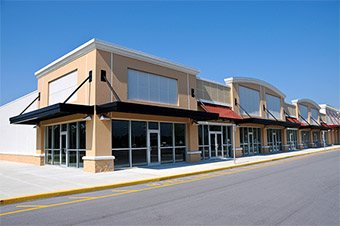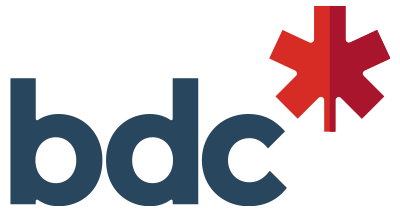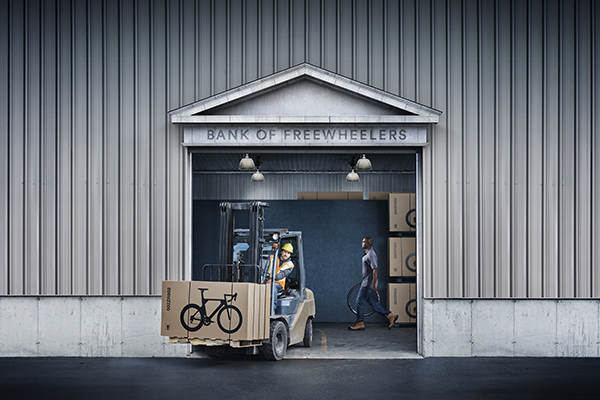Buying a Commercial Building: Financing Options
By Shajitha Rajavickneswaran | December 19, 2016
Presented by BDC

Buying a commercial building can be a smart business investment and may be a critical part of your company's business plan.
There are many components to the purchase of commercial real estate. Evaluating the investment opportunity, selecting a location, building a team of experts to help with the purchase and of course, financing the purchase.
In this article we take an in-depth look at financing options when purchasing a commercial building or real estate.
Buying a Commercial Building: Understanding the Lingo
In order to feel comfortable talking to experts about purchasing commercial real estate, it helps to familiarize yourself with common jargon. There are a few common terms that you will hear quite often:
Principal: The amount of money borrowed, excluding interest, which remains unpaid
Amount: The principal of the mortgage
Term: The length of the mortgage (often in years)
Rate: The percentage of interest that the mortgage lender charges on the principal amount
AACI: Accredited Appraiser Canadian Institute
CMHC: Canadian Mortgage and Housing Corporation
ESA: Environmental Site Assessment
Underwriting: Due diligence work done to assess whether financing should be offered and if so, what terms and conditions should be set.
Amortization: The repayment of the mortgage loan principal over a period of time, usually on a fixed schedule.
Reserves: Money saved in a separate account to pay for the cost of future capital expenses related to building repair or replacement.
Loan to value ratio: A ratio used to assess the loan amount in comparison to the appraised value of the property.
Debt-Service Coverage Ratio: A ratio used to assess the borrower’s ability to pay off their debt based on net income.
Balloon payment: A larger payment made at the end of the loan period to pay off the remaining principal, when the loan's amortization term goes beyond the loan's due date.
Lockout Period: The loan cannot be paid off until this period has passed.
Buying a Commercial Building: Residential vs Commercial Mortgages
Most people are fairly familiar with residential mortgages and will have an understanding of how they are commonly structured, so to better understand commercial mortgages it helps to compare them to residential mortgages.
Residential mortgages are given based on the financial standings of the individual looking to acquire the loan. This differs from commercial mortgages as they are given based on the financial standings of the company.
That means greater risk is taken by the lender, which is then offset by making stricter terms and conditions. Here are a few key differences you find when comparing the financial structure of residential and commercial mortgages.
|
Income |
|
|
Residential Mortgages |
Commercial Mortgages |
|
Decisions are based on the income of the loan acquirer. The requested debt should be no more than 45% of your gross income. The payment schedule should also ensure payments are no more than 28% of your income. |
Decisions are based on the income of the business. Using the Debt-Service Coverage Ratio, companies should ideally have a ratio of 1.25 to be considered for a loan. (See below for more on ratios) |
|
Down Payments |
|
|
Residential Mortgages |
Commercial Mortgages |
|
If the asker has good credit, down payments can potentially be brought down to $0. Lenders also look at the Loan-To-Value Ratio. This can be up to 95%, although anything over 80% requires Private Mortgage Insurance. (See below for more on ratios) |
An average of 20% is taken as the down payment. Lenders can also offer as low as 10% if they are competing for loan business. The average acceptance ratio for Loan-To-Value is about 65%-80%. (See below for more on ratios) |
|
Length of Payment |
|
|
Residential Mortgages |
Commercial Mortgages |
|
The conventional mortgages range from about 15 to 40 year terms, with the average being 30 years. If the housing market is strong, lenders believe that values will increase and are willing to offer as much as 50 year terms on a mortgage. |
Commercial mortgages have a greater risk value, therefore 10 year terms are the average, but can range from 5 to 20 year terms. Due to the shorter term, commercial mortgages often have a balloon payment at the end of the term. This amount will be larger than the regular payment amount. |
|
Interest Rates |
|
|
Residential Mortgages |
Commercial Mortgages |
|
Fixed rates on a mortgage depend on the length of the term. They can start at around 3% for a 1-year term depending on the institution. Variable interest rates can also be available and are usually equal to, or a bit higher than the fixed rate. |
Due to risk, commercial rates can often be a couple percent higher than that of a residential mortgage. For example, if a residential mortgage is 5%, a commercial mortgage for the same term length could be around 7%. |
|
Penalties |
|
|
Residential Mortgages |
Commercial Mortgages |
|
A few factors call for a penalty to be put on a mortgage. This includes a prepayment penalty if you’re selling your home before you’ve reached the end of your term, transferring it to another lender, or if you refinance your mortgage. |
Commercial mortgage penalties also have a prepayment penalty as well as a lockout period, which prevents the mortgage from being paid off until the lockout period has passed. Prepayment penalties are calculated by multiplying the remaining principal with the loan's stated penalty rate.
|
Buying a Commercial Building: Expectations of Institutions
Commercial mortgages involve a variety of documents in order for institutions to assess whether the loan is likely to be paid back. Although the mortgage is business related, personal information will still be required from the borrower. This includes a valid driver’s license, proof of address and a social security number.
A business plan and financial records are also key necessities. The business plan is to assure the lenders that a strategy is in place on how the money will be spent, and the projections of how profits will be generated. Depending on previous employment, necessary financial records include current pay stubs, bank records, self-employment tax forms if applicable and documentation.
Real estate documents and the appraisal value will be required when applying for a mortgage to show proof to the institution of the value of the property. Borrowers will need to show the original listing of the property as well as appraisal results if an appraisal has recently been done. If not, the appraisal will be included in the loan process.
Finally, a property survey is required in order for an institution to approve the mortgage. A property survey maps out the boundaries of the property, the business location, and any physical features that are of importance.
Buying a Commercial Building: Fees to Be Aware Of
When applying for a loan, be aware that costs will accumulate outside the mortgage amount. Acquiring a property will include legal fees, survey charges, application fees, and appraisal charges.
Legal fees include attorney fees, research fees, title searches, and potential court filings. A legal aspect is needed for the loan process for services related to closing and inspecting the property.
A property appraisal or property valuation, which is used to determine the general market value of the property and is conducted by a property appraiser, is a requirement when looking for a commercial mortgage. The cost is dependent on the size of the property, and the charge can rise depending on the type of property as well.
A property condition assessment is required, which is typically done by an engineering firm. This assessment will look at things like obvious compliance with building code obligations (the assessor will not likely dismantle components in the inspection) and environmental issues, starting with a simple record search and can become more involved if the search indicates that is required.
Application fees are standard and will be a predetermined amount, although any changes made to the loan can cause an increase in these fees.
Buying a Commercial Building: Common Financial Ratios
Lenders use ratios as a benchmark for assessing the viability of a mortgage. Ratios can be used to calculate the risk to the borrower and determine whether the purchaser will have sufficient cash flow to pay back the loan.
Debt-Service Coverage Ratio (DSCR)
What it tells the bank: the borrower’s ability to pay off their debt based on their net income
Ideal range: Greater than 1
The calculation: DSCR = Net Operating Income / Total Debt Service
Example: A company has Net Operating Income of $2,250,000. Your loan principal is $1,200,000, with 5% ($60,000) in interest payments.
DSCR: $2,250,000 / ($1,200,000 + $60,000) = 1.78
Loan-to-Value Ratio (LTV)
What it tells the bank: the loan amount in comparison to the appraised value of the property
Ideal range: 65% to 80%
The calculation: LTV = Mortgage Amount / Appraised Value of the Property
Example: You are looking to acquire a building that has been appraised at $900,000. The mortgage amount you request is $700,000.
LTV Calculation: $700,000 / $900,000 = 0.77 or 77%
Buying a Commercial Building: Financing Sources
From traditional institutions to private equity, there are several different sources that can help you finance the purchase of a commercial building.
Each has its pros and cons to be aware of when finding out what commercial mortgage best suits your needs, and most importantly, is attainable.
Traditional Institutions
Canada has 5 major banks that are traditional financing institutions: the Bank of Montreal (BMO), Bank of Nova Scotia (Scotiabank), Canadian Imperial Bank of Commerce (CIBC), Royal Bank of Canada (RBC) and the Toronto-Dominion Bank (TD Bank).
Commercial mortgage lengths from these institutions range from 1 to 10 year terms, with either a fixed or variable interest rate. Some institutions only offer a first mortgage, and many require a current appraisal, a passing environmental report, and potentially a report on the building condition.
A key factor to keep in mind is that traditional banks may not offer commercial mortgages for some building and/or usage types.
For example, acceptable businesses for CIBC include multi-unit residential properties, retail plazas, strip malls, shopping centres, office buildings, medical centres, and industrial buildings. Business that do not qualify include hotels, motels, social clubs, banquet halls, schools, places of worship, recreational real estate, car washes, restaurants, and properties that require stabilization.
Business Development Bank of Canada (BDC)
The Business Development Bank of Canada (BDC) is a crown corporation that was formed by the federal government and operates under the mandate set out in the Business Development Bank Act.
The purpose of BDC is two-fold:
- To support Canadian entrepreneurship by providing financial and management services and by issuing securities or otherwise raising funds or capital in support of those services; and
- To give particular consideration to small and medium-sized enterprises
As the only bank in Canada that is solely focused on entrepreneurs, BDC is an excellent option for businesses that may find traditional funding to either be beyond their reach or to be too onerous in terms of both the due diligence processes and ongoing reporting requirements.
BDC offers commercial mortgages to different stages of business. Whether they are expanding or renovating current locations, purchasing a new building and land, or constructing on new grounds, BDC is willing to help businesses get access to the funds they need.
A key feature is that BDC understands the financial struggles of businesses, and are willing to make accommodations to make mortgages more affordable
Flexible options include:
- allowing business to pay off their loan over a 25 year period,
- postponing capital payments for the first 36 months,
- matching payments to seasonal cash flow, and
- offering the ability to make a 15% annual prepayment without being charged a penalty
Throughout the length of the mortgage, terms and conditions remain stable. There is also limited risk on the business owner because no personal assets are taken as collateral to pay off the mortgage.
Private Financers
Private organizations often differentiate themselves to access customers who are not accepted by the traditional mortgage sources. This includes those who are self-employed with no income, credit-challenged, non-residents of Canada, those going through a foreclosure, or those that are looking for short term financing and want to avoid penalties.
Private organizations are able to do this by focusing more on the borrower’s wealth or the property, rather than the business. If the property is marketable, the lender experiences lower risk, and is therefore more inclined to approve the commercial mortgage.
A key differentiator is the benefits they offer. Some private firms can approve your commercial mortgage in as little as 24 hours. Others are able to cut your monthly payments in half, offer you a second mortgage if needed, and allow you to put only a 15% down payment.
However, these benefits come at a cost and the overall payment can be much more. The 15% down payment option typically costs an extra 2-3% in interest, while second mortgage rates range from about 12-15%.
These may seem like extreme measure, but if large funds are needed and this is your only option, paying the interest may benefit your business in the long run.
Private funding can also lead to more complex debt structures, including mezzanine financing. You should get expert advice if you are considering exploring this option.
Buying a Commercial Building: Next Steps
By now you have seen that there are many nuances to purchasing a commercial building.
As you move forward with your decision be sure to talk to professionals and get expert advice. The journey may be complicated, but can be an important step in your company's operation and growth plans.









